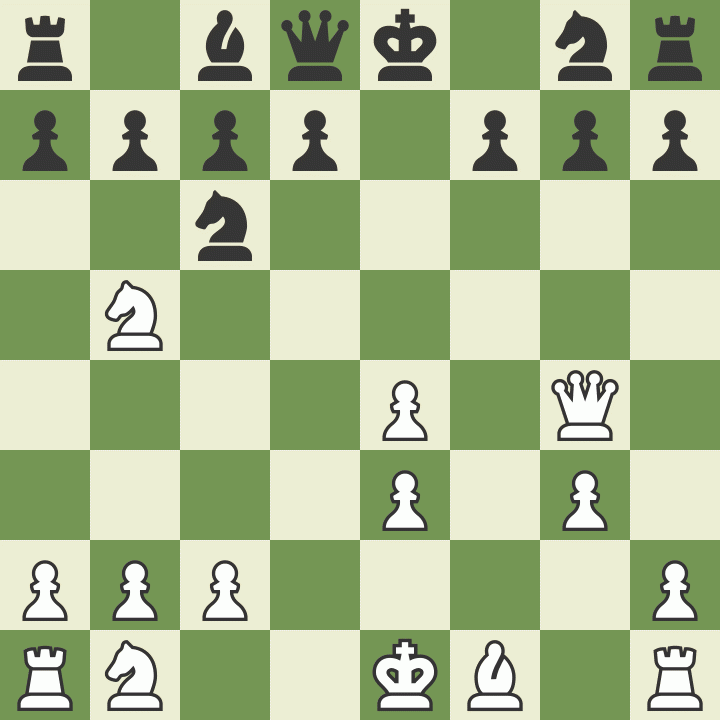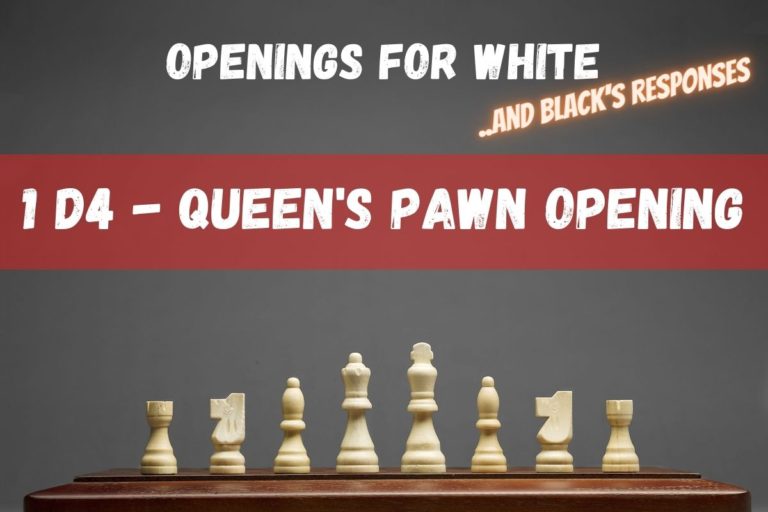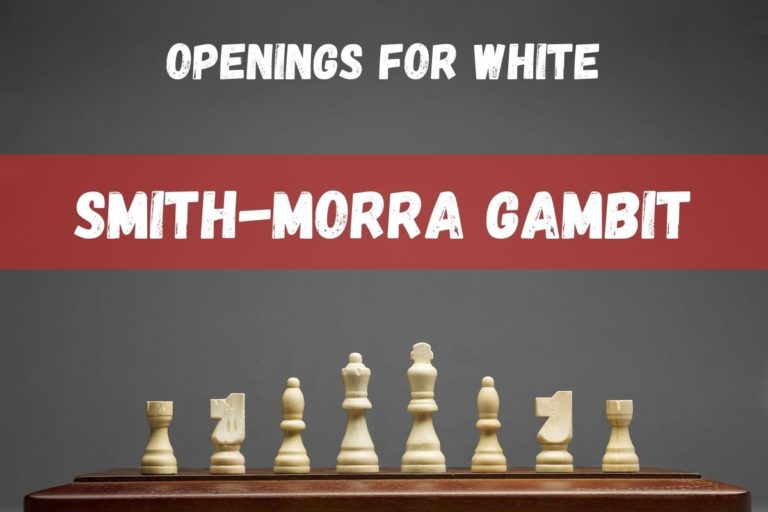Scotch Game in Chess: Complete Guide (Moves, Gambit, and Trap)
⭐⭐⭐ Take 10 minutes to read and improve your chess game ➡️ : This article was first published on, and is Copyright of Chessquestions.com
One of the first openings I learned as an alternative to Ruy Lopez opening theory was the Scotch game. It is a great opening for white pieces to gain space advantage and learn as a beginner, with simple lines and variations.
In this article, we will take a comprehensive look at the Scotch opening in chess. We will cover the history, key concepts and main lines of variation of the Scotch game. By the end of this article, you will have a complete understanding of this important chess opening and how to win in 15 moves with an awesome trap for black’s king even against a well-prepared opponent.
Let’s play chess.
What is The Scotch Game in Chess?
The Scotch game is an opening in chess where White aims for central domination, exchanging their d-pawn for Black’s e-pawn. Centuries-old in origin, and falling out of favor in the 1900s, the Scotch opening was recently revitalized by grandmasters as an alternative to the well-learned Ruy Lopez.
Scotch Game Moves
The moves that signify the Scotch Opening are
1.e4 e5 2.Nf3 Nc6 3.d4
The Scotch opening is a King’s Pawn Opening, with 1.e4, and with black mirroring with 1…e5, and then the two Knight moves, with white’s idea then pushing the Queen’s pawn two squares to d4 we have the Scotch game underway.

The interesting thing about the Scotch game is black’s third move. The e-pawn is lost and it comes down to how black wants to play, but the white player has forced the central squares play and will be already opening the center and releasing the pressure that never had time to build.
Scotch Opening Pros and Cons
Pros: For white, the pros to play the Scotch game are the space created centrally and the avoidance of the Ruy Lopez which is well researched, whilst removing black’s pawn on e5.
Cons: On the flip side, the cons are that the e4 pawn will be coming under attack shortly, and a second knight move is most likely going to be required, so whilst the space advantage has been gained, development has been slowed somewhat and your tactical ideas will have to be sound.
So where do we go from here? – 4th moves in the Scotch Game
Now we move into some variations of the opening based on white’s fourth move in the scotch opening chess game.
In most cases, we will see white play 4.Nxd4 and immediate recapture of the black pawn in the central position. Other options include
- Scotch Gambit – 4. Bc4
- Goring Gambit – 4. c3
…which I will come to shortly. Before that, let’s look at these scotch game variations following 4. Nxd4
3 Scotch Game Variations
Once black accepts and has captured the sacrificed pawn in the Scotch game and white has recaptured with the knight (Nxd4), things are once again determined by black as to which direction the game goes as the central pawns disappear and white maintains a small advantage.
| Variation | Move | White Win | Black Win |
|---|---|---|---|
| Schmidt: Mieses | 4…Nf6 | 34% | 30% |
| Classical | 4…Bc5 | 38% | 30% |
| Malaniuk | 4…Bb4+ | 34% | 34% |
Schmidt Variation 4…Nf6
Here black develops the king’s knight to f6 attacking white e-pawn. The pressure can begin to build back in the center but we will often see white either play 5. Nc3 to protect or go early for a knight exchange on c6 with 5. Nc6, the resulting position delaying the queen’s knight development.

This position once again keeps the pressure light in the center and is best for white.
Classical Variation 4…Bc5
Here black comes in for the knight on d4 where white has to protect or defend. As white, one would preferably defend with 5. Be3 or move on with the Knight exchange on c6 with 5. Nxc6

The other option for white here is to remove the knight with 5. Nb3 losing tempo. It is perhaps the least favored option of the three for sure. Outside of these three, there is nothing doing and no other moves should be considered and white will remain in a better position.
So let’s take that bishop out to e3 where we can expect black to develop the queen, 6. Qf6 to add central tension once again and pressure to our Knight.
Scroll down the page to find a great trap in the Scotch game from here, when white is expecting us to play 7. c3 which has happened in 2,024 games from 2,159 on record at chess.com but we do something entirely different.
Malaniuk Variation
Here black does not hang about and goes straight in for the quick check in the Malaniuk variation.

So now white has no option but to push c3 as Nc3 is not a favorable choice. When white plays c3 a 35% game win is retained, but playing the knight sees that drop to just 25% more to the point, you are going to lose your knight on the d-file, or the black queen will race to the flank on h4 and disrupt your pawn structure over there and win your e-pawn.
So, as white, respond with 5. c3 and watch the black bishop retreat to c5 or back to e7
The Scotch Gambit
Let’s move onto the Gambits now, and the Scotch is an interesting one, especially for black. White ignored the d4 pawn capture and plays 4. Bc4 instead.

This is a good sign for black who should respond immediately with 4…Nf6, otherwise known as the Dubois Réti Defense.
The win rate for black extends significantly at any level in this line, and even if it’s not played, mirroring white bishop on c4 with 4…c5 is also sound in respect to blacks’ chances.
The Goring Gambit
Another gambit from the Scotch game is the Goring Gambit, pushing the c-pawn to the jaws of black’s pawn on d4.
At any level this is a good line for white, regardless of blacks’ move, so be aware, but also, do not accept for your best lines as black.

Here black is best pushing the d-pawn with 4…d5 and attacking whites d4 pawn.
Scotch Game Playing White
If you are playing white and planning on using the Scotch game, then pay special attention to The Classical and Schmidt variations playing 5. Nxc6 and do not be afraid to continue with the aggression with the Goring Gambit but watch out if black declines.
You will need to exchange pawns with the just-moved black pawn, seeing the black queen advance, from there, you can then capture the other central black pawn and expect a 6…g4+ check, which you will block with your Kings Knight, to reach a roughly equal 0.0 position.
The Scotch opening is a nice option to counter the Ruy Lopez which is studied thoroughly, and you’ll often find that whilst blacks’ only real option is to grab your pawn, there is often delay as they wonder what is going on for a second or two..
Facing the Scotch Game and How to Play Against it as Black
Before we go any further, if you are playing the black pieces and come face to face with the scotch game, always play 3…exd4 – Take that pawn that is offered, it makes no sense to do otherwise.

To back up this claim, let’s consider 25,214 master games on chess.com displaying 24,784 occasions when the pawn was taken.
On lichess, the story is similar with 18,691 games from a total os 18,788 taking that pawn.
Interesting 3…d6 has been played the next most frequently, perhaps from a lapse in concentration in defending the black e-pawn some 338 times, but resulting in the fewest victories for black from another 9 options that have been played with negligible frequency.
| Move | Frequency | Win Wins | Draws | Black |
|---|---|---|---|---|
| 3…exd4 | 24784 | 36% | 32% | 32% |
| 3…d6 | 338 | 57% | 25% | 18% |
| 3…Nxd4 | 25 | 64% | 25% | 18% |
| 3…Nf6 | 22 | 50% | 27% | 23% |
There are several other moves, including, Bd6, Qf6, Bb4, f6, Qe7, and f5 all registering fewer than ten occurrences, but all with similar outcomes with the exception of f5, which has been seen just once, resulting in a win for black.
Why You Should Learn the Scotch Game
The Scotch Game is a great opening in chess to learn as you can benefit whether you are playing white or black.
A well-studied proponent of the Scotch game playing white can take the opponent off guard and throw them into some disarray at disregarding the pressure in the center and perhaps lull the less experienced club player into thinking you are a little gung-ho and careless with rapid development and a willingness to sack off your dark-Squared Bishop. – A perfect time to administer the best moves in the opening.
Learning the Scotch game as black is important so as to recognize immediately white’s intentions, given you are now able to somewhat control where the game goes, and what variation white will have to play. Understand more than your white opponent in the Scotch game and their best efforts to trip you up may backfire spectacularly.
Deadly Trap in the Scotch Game
There is little more fun to be had in chess openings than learning and successfully employing a trap or two when practicing, and if you have arrived at the Scotch game instruction hoping to find one, and you got this far down the page, you just struck chess trap gold.
So after the classical variation opening of 1. e4 e5 2. Nf3 Nc6 3. d4 exd4 4. Nxd4 Bc5 5. Be3 Qf6
We have blacks c7 square undefended, and rather than defend our knight once again with 7. c3 as you would see in 94% of games, we are going to go for a lesser-known and rarely played shift of that knight to b5 attacking the undefended c7 square.
Black can now trade bishops on e3 despite doubled pawns and black has a choice to pull the queen back to d8 immediately or check on h4 to further disrupt the structure of whites pawns. Let’s consider this is what happens before black goes back to protect c7.

Now with a little movement from the Queen, white begins to move focus to the weak f7 square, moving first to g4 feigning three to g7, where we can expect black to push the pawn to g6 in response.
A quick shift back to the f-file and black kind of sees what’s coming but can’t abandon the c7 square, so moves d6 to open the horizontal 7 rank for the queen to protect both pawns.
Here white can now classically develop the light-squared bishop to c4 and there is now white threatens mate on f7

Now we have arrived at 1. e4 e5 2. Nf3 Nc6 3. d4 exd4 4. Nxd4 Bc5 5. Be3 Qf6 6. Nb5 Bxe3 7. fxe3 Qh4+ 8. g3 Qd8 9. Qg4 g6 10. Qf4 d6 11.Bc4
Now, black can’t defend both pawns with the queen as white will attack f7+ draw the queen, lose it and then lose the a8 rook to the knight jumping to the weak c7 square.
The best move is 11… Ne5, whereby white short castles 12. 0-0 adding further heat on f7 with the rook now supporting the queen and bishop.
Black can play 11…Nf6, but again, 12.0-0 and that pressure is still there.
The absolute key to this trap is that white has built pressure on both the weak pawns on c7 and f7

So we now have the knight on e5 protecting f7, so whilst it is threatening the white bishop, if it does take, it abandons f7 and it’s mate-in-one.
So what is blacks’ next best move? How about 12…Bg3 attacking the white rook on the f-file?
White can protect by developing the Knight off the back rank, so that the rook can capture the bishop.
Makes sense for black, a bishop for a rook is a good material trade and now white is down material, pawn structure all over the place, and the black queen can move to d7 to protect both weak pawns, but white is still better here no matter how it looks and is one move away from a killer blow.

And that move for white is 15. Be6 and the game is won for white.
If black captures the bishop with the Queen, white plays the Royal fork to c7 winning the queen, if the bishop is captured by the pawn on f7, white plays queen to f8 checkmate the black king!.

Scotch Game History
The name “Scotch” in the Scotch Opening was derived from a correspondence match in 1824 between Edinburgh and London. The Scotch game, which was popular in the 19th century, lost popularity among top players by 1900 because it was thought to free Black too soon and allow equalization with ease.
Scotch Game Examples –
Langer vs Yermolinsky Scotch Opening
This is the game with the featured trap as explained above
Carlsen vs Gujrathi Scotch Game: Scotch Gambit
The game which lastes 20 seconds when Carlsen offered a draw
Ivanchuk vs Firat – Göring Gambit Declined
A great example of the declined gambit and a crazy endgame.
Aryan Tari vs Le Quang Liem: Scotch Game: Schmidt, Mieses Variation
And the Mieses variation
FAQs
Is the Scotch Game a good opening?
The scotch game is a very good opening for white to learn especially if you can find unprepared opponents who are not aware of the main live or variations of this opening. It should be learned before other openings because it doesn’t have as much opening theory and less complexity.
How do you respond to a Scotch Opening?
When white sacrifices the pawn on d4 it should be taken in every case, not to do so, makes no sense if you want to find a successful line playing against the Scotch game playing the black pieces.
Why is it called Scotch Opening?
The name is derived from a 200-year-old correspondence chess match between London chess club and Edinburgh, the respective capitals of England and Scotland.
Conclusion
The Scotch opening in chess is a great alternative to the more common Ruy Lopez opening. It is simple to learn from a starting position for a chess player and can be very effective against players who are not well-prepared for it or a positional battle. In this comprehensive guide, I have covered all you need to know about the Scotch game in chess.






